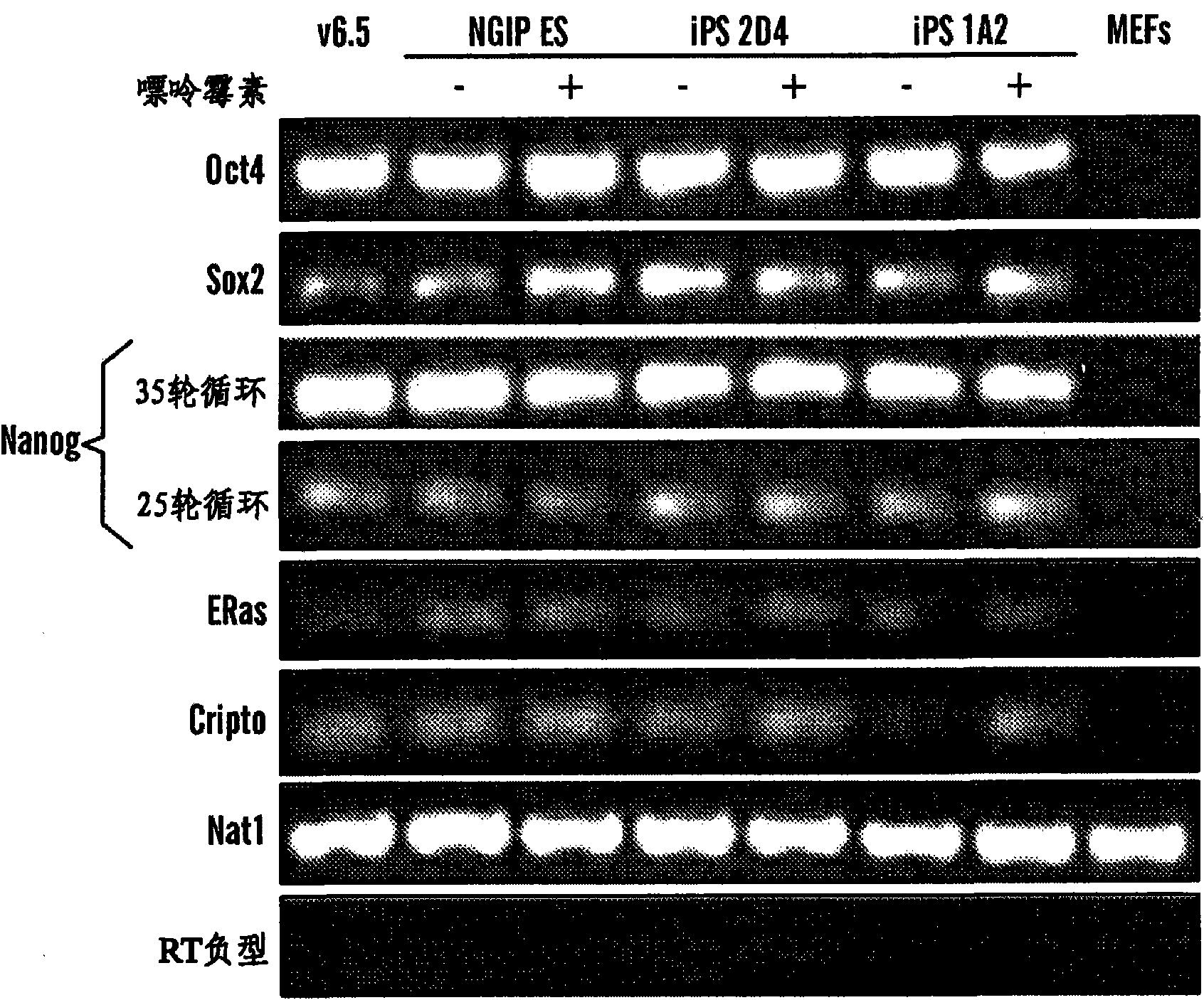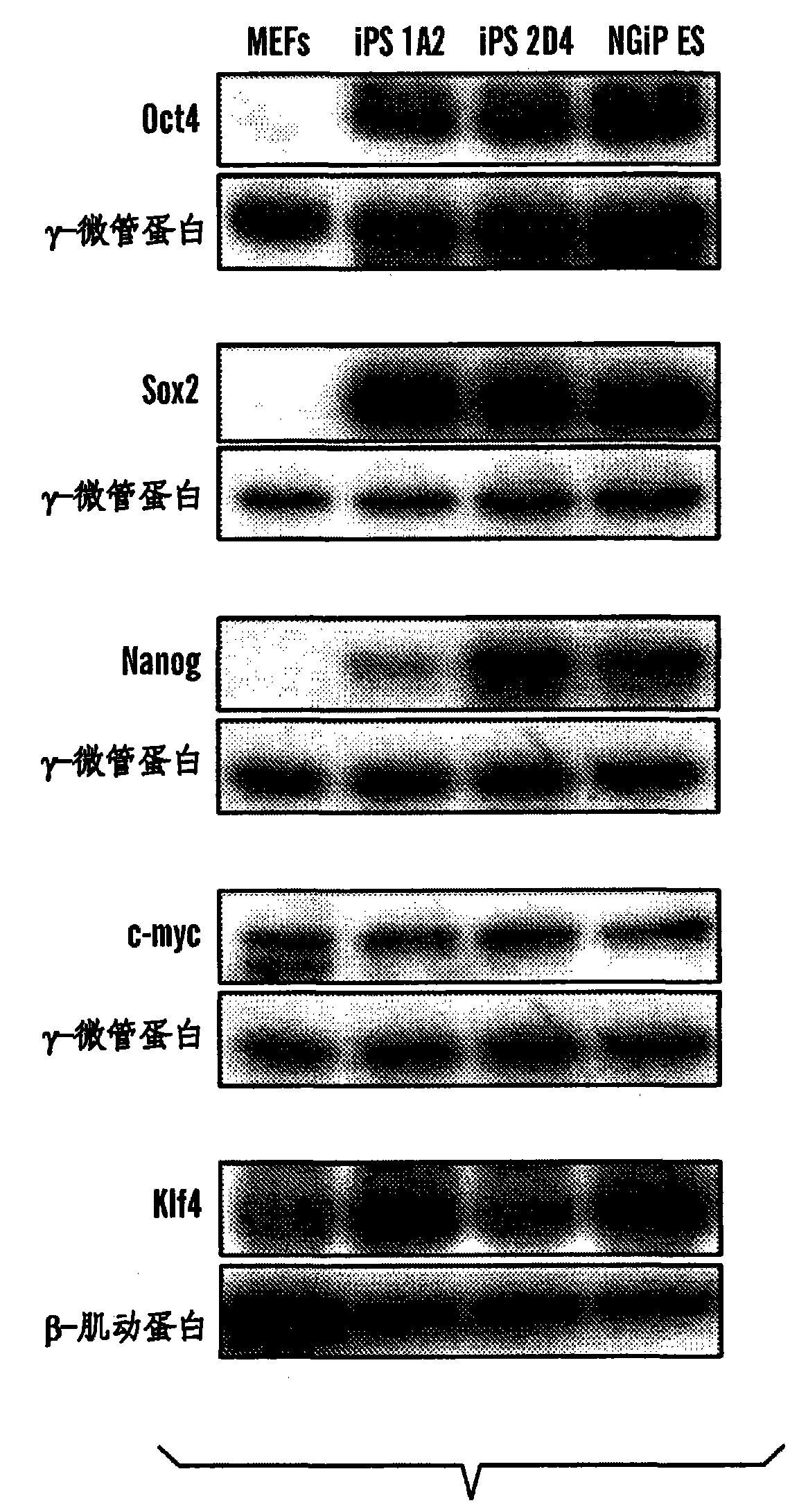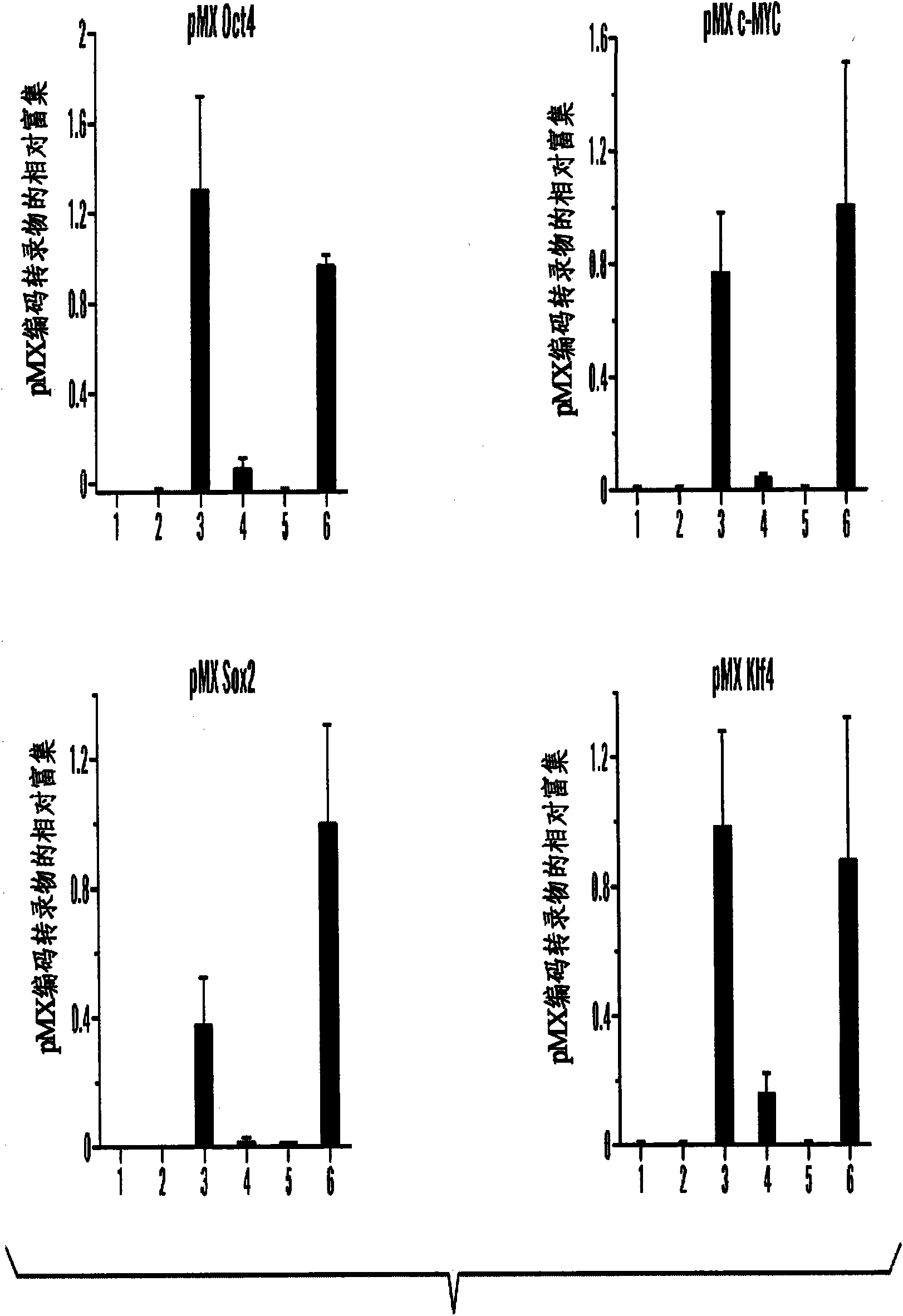Methods of generating pluripotent cells from somatic cells
A cell and primary cell technology, applied in the direction of artificially induced pluripotent cells, biochemical equipment and methods, animal cells, etc., can solve problems such as developmental potential limitations
- Summary
- Abstract
- Description
- Claims
- Application Information
AI Technical Summary
Problems solved by technology
Method used
Image
Examples
Embodiment 1
[0158] Example 1: Generation of iPS cells using fibroblasts selectable by Nanog
[0159] Female mouse embryonic fibroblasts (MEFs) carrying GFP-IRES-Puro cassettes in the endogenous Nanog locus are called Nanog-GFP-puro (Hatano, S.Y.; Tada, M.; Kimura, H.; Yamaguchi , S.; Kono, T.; Nakano, T.; Suemori, H.; Nakatsuji, N. and Tada, T. (2005) Mech Dev 122, 67-79), which were encoded with Oct4, Sox2, c- Retroviral infection of the Myc-T58A mutant and cDNA of Klf4, which stabilized the protein (Sears, R.; Nuckolls, F.; Haura, E.; Taya, Y. ; Tamai, K. and Nevins, J.R. (2000) Genes Dev 14, 2501-2514). In contrast to previously reported selection for Fbx15 at 3 days post-infection (Takahashi and Yamanaka, 2006), selection for Nanog expression 3 days post-infection did not result in a population of cells, suggesting that the kinetics of reactivation of Fbx15 and Nanog genes differ. Resistant cell populations reproducibly emerged when selection was performed 7 or more days after inf...
Embodiment 2
[0161] Example 2: Nanog-selectable iPS cells confer ES cell-like phenotype on somatic cells
[0162] To determine whether iPS cells that can be selected by Nanog have functional properties similar to ES cells, the ability to impose an ES-like phenotype on somatic cells in the context of cell fusion was tested. Cells were derived from the puromycin-resistant 2D4 iPS cell line and hygromycin-resistant MEFs ( Figure 2A ). Two weeks after fusion, seven double-resistant tetraploid hybrid clones with ES cell-like morphology and continuing to express Nanog-GFP were recovered ( Figure 2B and the data is not shown). A hybrid cell population was recovered when control Nanog-GFP-puro ES cells were fused with hygromycin-resistant MEFs. To test for pluripotency, the hybrid cells were injected into immunocompromised mice; after four weeks, teratomas containing cell types characteristic of all three germ layers were isolated (data not shown).
Embodiment 3
[0164] Example 3: Ectopic Oct4 expression is dispensable for maintenance of iPS cells
[0165] 2D4 iPS cells selected by Fbx15 showed persistent retroviral expression of Oct4 and Sox2 with negligible expression from their respective endogenous loci, indicating a constant need for exogenously supplied factors to maintain iPS cell self-renewal and multiplication. performance (Takahashi and Yamanaka, 2006). To corroborate the gene expression data indicating efficient retroviral gene silencing in iPS cells, it was determined whether sustained Oct4 expression is necessary for the maintenance of iPS cells using fibroblasts carrying a doxycycline-inducible Oct4 transgene in their genomes Genetic testing was performed (Hochedlinger, K.; Yamada, Y.; Beard, C and Jaenisch, R. (2005) Cell 121, 465-477) ( Figure 3A ).
[0166] To initially determine whether the Oct4-inducible system could be used to obtain cell populations, Oct4-inducible MEFs were retrovirally infected with Sox2, c-...
PUM
 Login to View More
Login to View More Abstract
Description
Claims
Application Information
 Login to View More
Login to View More - R&D
- Intellectual Property
- Life Sciences
- Materials
- Tech Scout
- Unparalleled Data Quality
- Higher Quality Content
- 60% Fewer Hallucinations
Browse by: Latest US Patents, China's latest patents, Technical Efficacy Thesaurus, Application Domain, Technology Topic, Popular Technical Reports.
© 2025 PatSnap. All rights reserved.Legal|Privacy policy|Modern Slavery Act Transparency Statement|Sitemap|About US| Contact US: help@patsnap.com



